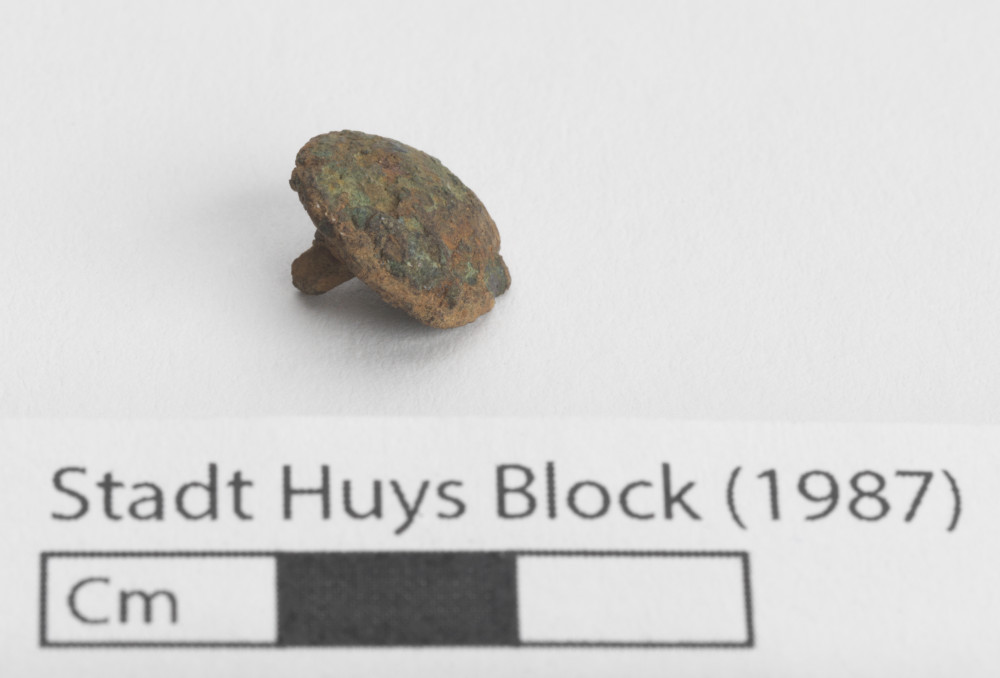Introduction: Lots 8, 9, and 15 are modern designations for adjacent parcels of land that were owned together and used as a single property until the early 1830's. Excavations produced important discoveries like that of the Colonial-era Lovelace Tavern, proving that significant archaeological resources could still exist in urban spaces. Project archaeologists were able to lobby for increased time and funds to continue their work on the strength of these finds, leading to additional discoveries. In all, the project provided considerable information about the history of New York City and its inhabitants from the 17th to the 20th centuries.
Rationale: Test Cut J was placed in the middle of the backyard of Lot 9 and was one of the first units excavated as part of the Stadt Huys project. The test cut yielded important information about the stratigraphy of the area and helped in the development of the site's testing methodology. Test Cut J consisted primarily of mixed fill, A concrete floor associated with the ca. 1819 building was also uncovered.
Results: This level is part of a larger layer of fill containing mixed 17th- through early-19th-century artifacts. The mixture of artifacts from different time periods indicates that this level is likely disturbed. Disturbed contexts still have value to archaeologists because they can tell us about the history of the site we are studying.
Lot 9, Test Cut J, Stratum IV, Level A
-
Collection method
Shovel, Trowel, Screen (1/4-inch mesh). Natural Level.
-
Soil description
Reddish-Brown Sand
-
Munsell
7.5YR 4/4, 10YR 5/3, 10YR 4/4



